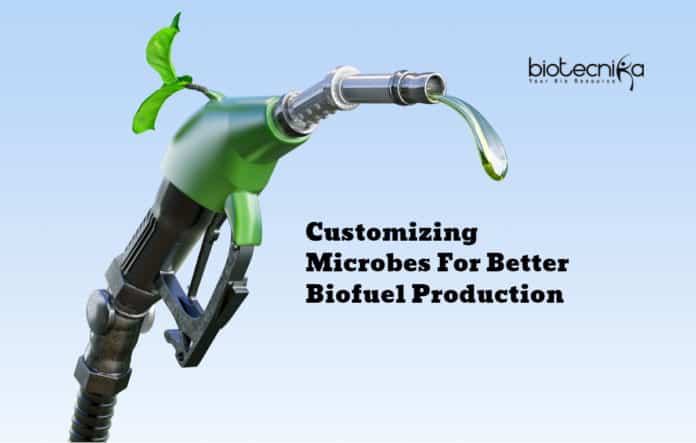Microbes For Biofuel Production- New Method By Oak Ridge National Laboratory
Scientists at the DOE Center for Bioenergy Innovation (CBI) at Oak Ridge National Laboratory are utilizing the power of microorganisms to turn non-food biomass like switchgrass, corn stalks, and poplar into biofuels and bioproducts.
Microorganisms are the most abundant life forms on earth. They influence the growth of plants, digest food in the human gut, transform pollutants in the environment, and perform a host of other functions that affect our everyday life.
Scientists at the Oak Ridge National Laboratory- the US Department of Energy have demonstrated a method to insert genes into different microorganisms that previously would not accept foreign DNA. This was done to create custom microbes
to break down plants for bioenergy.To increase the efficiency of the conversion process, microbes are required that can break down cellulose and ferment it into biofuels in a single set of reactions.
Dubbed consolidated bioprocessing (CBP), is an approach that improves the economics of biofuels production.
Though the Scientists at CBI has demonstrated the feasibility of consolidated bioprocessing, they need better strains of microbes to achieve higher yields of biofuels. The researchers are aiming to produce bacteria that eat cellulose to produce desired fuels and thrive in high-temperature environments without oxygen.
Adam Guss says that it involves a complex set of traits. It is challenging to engineer a model organism like Escherichia coli or Saccharomyces cerevisiae. He is a genetic engineer at ORNL’s Biosciences Division.
Enhancing or introducing target traits in these unusual microbes can be challenging. There are few tools available for engineering non-model microbes. These organisms have developed defense mechanisms that can foil attempts to insert new genes.
Microbes For Biofuel Production- The Principle Behind The New Method

Microbes have defense mechanisms to guard themselves against viruses. These mechanisms destroy foreign DNA.
To distinguish their DNA from others, each microbe adds a methyl group on specific DNA sequences. These methylated sequences are unique to the organism and act as a signature to that particular microorganism. Special enzymes called restriction enzymes scans the cell and chew up any DNA that lacks methyl groups on the signature sequences.
Guss and his team of researchers have demonstrated a way to leverage this defense system to coax microbes into accepting bioengineered DNA as their own.
The team of researchers first identified a microbe’s signature sequences and the enzymes that methylate them using sequencing methods.
Then they expressed enzymes, known as methyltransferases, in a conventional laboratory microbe- E. coli. With the right methyltransferases in place, E. coli can make copies of DNA with the expected methylation patterns. This ensures that the target microbe would accept and use the new DNA.
The scientists recently published their method and the results of the experiment validating that the gene they inserted into Clostridium thermocellum ATCC27405. This microorganism is considered as ‘challenging to transform’ by scientists previously. With the application of the newly devised method, the organism the organisms were functioning as ‘anticipated.’
The team of scientists has had similar success with ten other species and counting. These species were previously unamenable to genetic engineering.
Microbes For Biofuel Production- What’s Next?
Guss foresees many benefits of this rapid domestication method for applied and basic research. According to him, this method is especially useful in identifying gene function. With this approach, scientists can remove or overexpress the gene of interest in microbes to determine how that affects the organisms’ specific traits. In addition to bioenergy, the method can be applied in biomedical and other fundamental research.
Centre for Bioenergy Innovation is one of four Bioenergy Research Centers funded by the DOE Office of Science. It focuses on custom engineering feedstock plants and microbes for a sustainable bioeconomy.






























